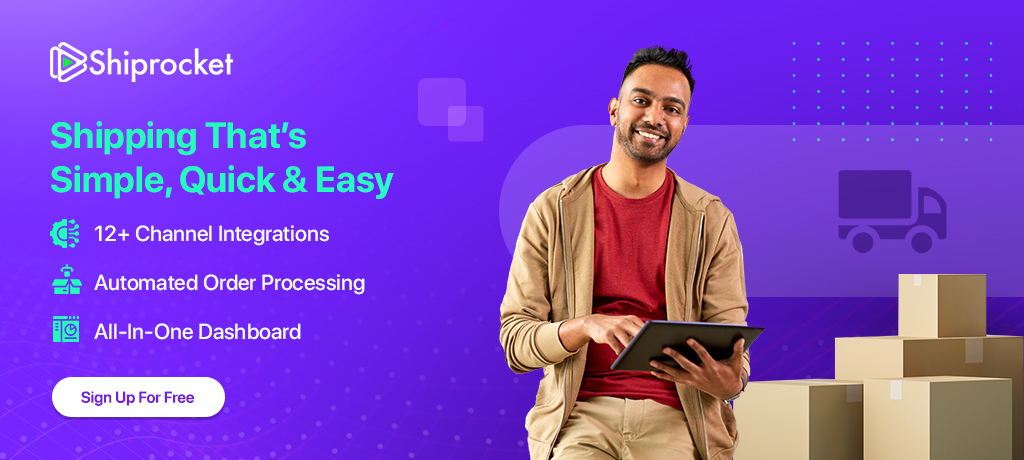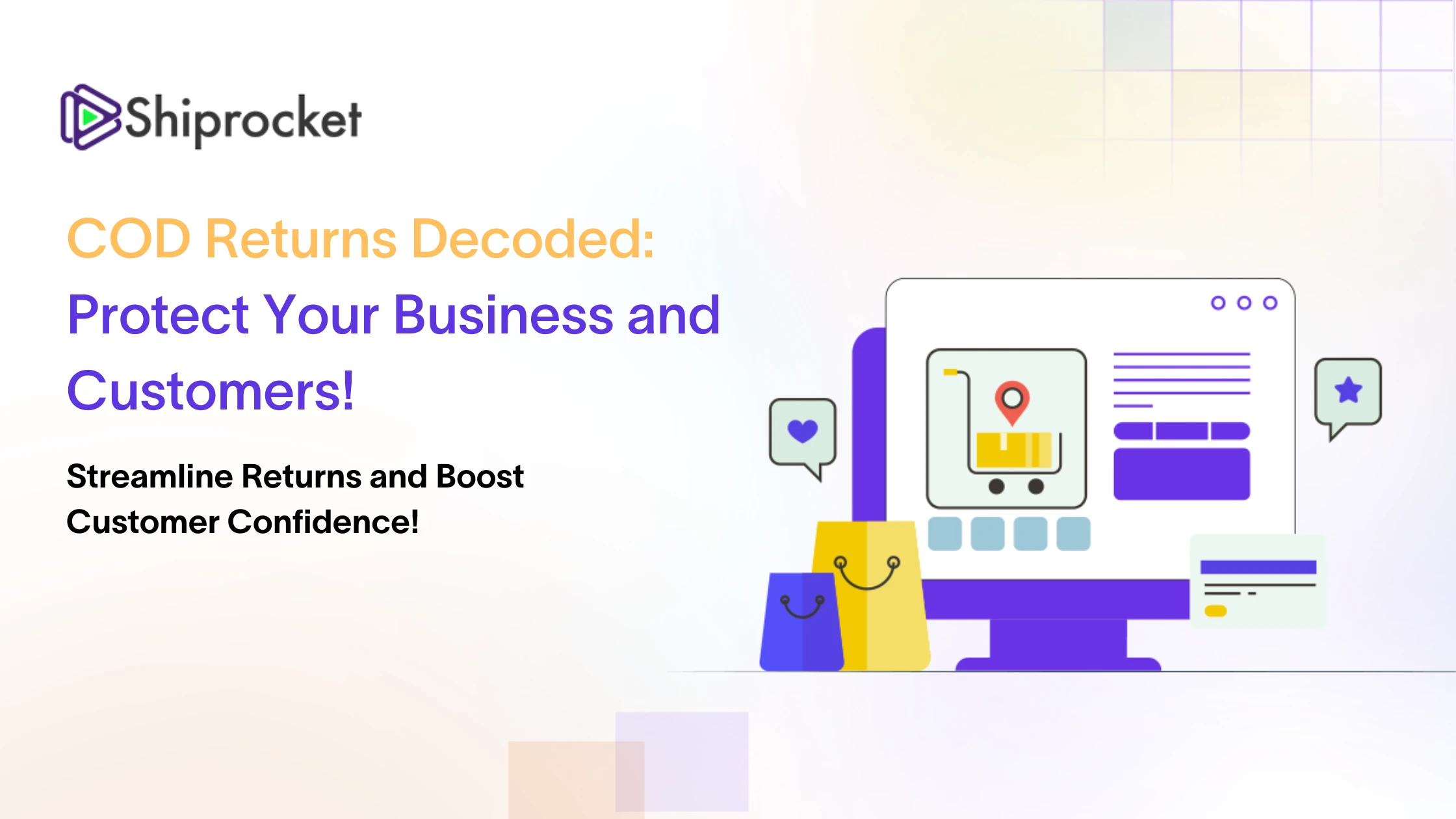Why Reverse Logistics is Required: Key Insights and Benefits
- Understanding Reverse Logistics
- Importance of Reverse Logistics
- Benefits of Reverse Logistics
- Reverse Logistics in E-commerce
- Reverse Logistics Process
- Shiprocket’s Reverse Logistics Solutions
- Expert Insights
- FAQs
- What is reverse logistics?
- Why is reverse logistics important in e-commerce?
- How can businesses benefit from reverse logistics?
- What are the best practices for reverse logistics?
- How does Shiprocket help with reverse logistics?
- What challenges do businesses face in reverse logistics?
- How can technology improve reverse logistics?
Forward logistics emphasizes the delivery of products to customers, but reverse logistics is equally crucial for managing returns and maintaining customer satisfaction. This aspect of logistics is essential within the e-commerce ecosystem, as it aids businesses in handling returns, recycling, refurbishing, and various other processes.
Understanding Reverse Logistics
Reverse logistics refers to the process of moving goods from their final destination back to the manufacturer or a designated location for the purpose of returns, recycling, refurbishing, or disposal. Key components of reverse logistics include:
-
Returns Management: Handling product returns efficiently to ensure customer satisfaction.
-
Recycling: Reprocessing materials to reduce waste and environmental impact.
-
Refurbishing: Repairing and reselling returned products to maximize their value.
-
Disposal: Properly disposing of products that cannot be reused or recycled.
Importance of Reverse Logistics
Customer Satisfaction
Efficient reverse logistics can significantly enhance customer satisfaction. A smooth and hassle-free returns process builds trust and encourages repeat purchases. When customers know they can easily return products, they are more likely to buy from the same brand again. For example, companies like Zappos have built a strong reputation by offering free and easy returns, which has greatly contributed to their customer loyalty.
Cost Savings
Businesses can save money through effective reverse logistics by reducing the costs associated with returns, refurbishing, and recycling. Efficient returns management minimizes the financial impact of returned goods and helps recover value from returned products. For instance, Dell has implemented a successful reverse logistics strategy to refurbish and resell used electronics, significantly cutting down on waste and costs.
Sustainability
Reverse logistics contributes to sustainability by promoting recycling and reducing waste. By refurbishing and reselling products, businesses can extend the lifecycle of goods and minimize their environmental footprint. Companies like Patagonia have embraced reverse logistics by encouraging customers to return used products for recycling or resale, aligning with their commitment to environmental sustainability.
Benefits of Reverse Logistics
Improved Inventory Management
Reverse logistics helps businesses maintain better control over their inventory. By efficiently managing returns, companies can quickly restock returned items, reducing the need for excess inventory and optimizing storage space. This is particularly important for businesses with limited warehouse space, as it allows them to make the most of their available resources.
Enhanced Brand Loyalty
A smooth returns process can lead to increased customer loyalty. When customers have a positive experience with returns, they are more likely to trust the brand and make future purchases. This loyalty can translate into long-term business growth. For example, Amazon‘s hassle-free return policy has been a key factor in building a loyal customer base.
Operational Efficiency
Effective reverse logistics can streamline operations and reduce waste. By implementing best practices and leveraging technology, businesses can optimize their reverse logistics processes, leading to increased efficiency and cost savings. Companies like Walmart have invested in advanced reverse logistics systems to handle returns more efficiently, resulting in significant operational improvements.
Reverse Logistics in E-commerce
Challenges
Common challenges in e-commerce reverse logistics include managing high volumes of returns, ensuring timely processing, and maintaining visibility into the returns process. These challenges can impact customer satisfaction and operational efficiency. For instance, during peak seasons like holidays, the volume of returns can skyrocket, putting additional strain on logistics operations.
Solutions
Shiprocket offers comprehensive solutions to address these challenges. With a centralized dashboard, businesses can manage returns efficiently and gain real-time visibility into the process. Multi-courier integration ensures that returns are handled smoothly, regardless of the shipping partner. Additionally, Shiprocket’s automated shipping solutions help reduce manual errors and streamline the entire returns process.
Reverse Logistics Process
Steps
The reverse logistics process typically involves the following steps:
-
Initiate Return: Customers request a return through the e-commerce platform.
-
Process Return: The return is processed, and a shipping label is generated.
-
Inspect and Sort: Returned items are inspected and sorted based on their condition.
-
Refurbish or Recycle: Items are either refurbished for resale or recycled.
-
Restock or Dispose: Refurbished items are restocked, and non-recyclable items are disposed of properly.
Best Practices
To manage reverse logistics effectively, businesses should:
-
Implement Clear Return Policies: Ensure customers understand the return process and conditions.
-
Leverage Technology: Use data-powered solutions to track and manage returns efficiently.
-
Optimize Processes: Continuously evaluate and improve reverse logistics processes to enhance efficiency and reduce costs.
Shiprocket’s Reverse Logistics Solutions
Shipping Aggregation Platform
Shiprocket’s platform simplifies reverse logistics by offering a single platform to ship with 25+ courier partners, covering 24,000+ pin codes across India and international locations. This integration reduces operational complexity and ensures smooth returns management.
Order Management
With Shiprocket’s centralized dashboard, businesses can manage both forward and return orders seamlessly. This streamlined approach reduces manual errors and enhances visibility into the returns process.
Inventory and Channel Integration
Shiprocket offers API integration with platforms like Shopify and WooCommerce for real-time order syncing. This integration ensures accurate inventory tracking and efficient order processing, reducing the risk of stockouts and overstocking.
Discounted Shipping Rates
Shiprocket provides competitive shipping rates starting at Rs. 20 for 500 grams, helping businesses reduce costs and increase profitability. These discounted rates make it more affordable for businesses to manage returns and logistics.
Engage 360 – Marketing Automation
Shiprocket’s Engage 360 marketing automation enhances customer communication during the returns process. By leveraging omnichannel marketing capabilities, businesses can keep customers informed and engaged, improving their overall experience.
Expert Insights
Did you know that businesses with efficient reverse logistics processes can recover up to 12% of their annual revenue from returned products? This highlights the significant financial impact of effective reverse logistics. Additionally, companies that prioritize reverse logistics are often seen as more customer-centric and environmentally responsible, further enhancing their brand reputation.
FAQs
What is reverse logistics?
Reverse logistics refers to the process of moving goods from their final destination back to the manufacturer or a designated location for returns, recycling, refurbishing, or disposal.
Why is reverse logistics important in e-commerce?
Reverse logistics is important in e-commerce because it enhances customer satisfaction, reduces costs, and promotes sustainability by efficiently managing returns and recycling processes.
How can businesses benefit from reverse logistics?
Businesses can benefit from reverse logistics through improved inventory management, enhanced brand loyalty, operational efficiency, and cost savings.
What are the best practices for reverse logistics?
Best practices for reverse logistics include implementing clear return policies, leveraging technology for efficient tracking, and continuously optimizing processes to reduce costs and improve efficiency.
How does Shiprocket help with reverse logistics?
Shiprocket helps with reverse logistics by offering a centralized dashboard for managing returns, multi-courier integration, discounted shipping rates, and marketing automation to enhance customer communication.
What challenges do businesses face in reverse logistics?
Businesses often face challenges such as managing high volumes of returns, ensuring timely processing, and maintaining visibility into the returns process. Effective reverse logistics solutions can help mitigate these challenges.
How can technology improve reverse logistics?
Technology can improve reverse logistics by providing real-time tracking, automating processes, and offering data-driven insights to optimize returns management. This leads to increased efficiency and better customer experiences.
In conclusion, reverse logistics is required because it plays a crucial role in enhancing customer satisfaction, reducing costs, and promoting sustainability. By implementing effective reverse logistics strategies, businesses can improve inventory management, enhance brand loyalty, and streamline operations. Explore Shiprocket’s solutions to optimize your reverse logistics process and drive growth for your business. With Shiprocket’s comprehensive logistics platform, you can simplify your operations, reduce costs, and provide a seamless experience for your customers. Start leveraging the power of efficient reverse logistics today and take your business to new heights.






